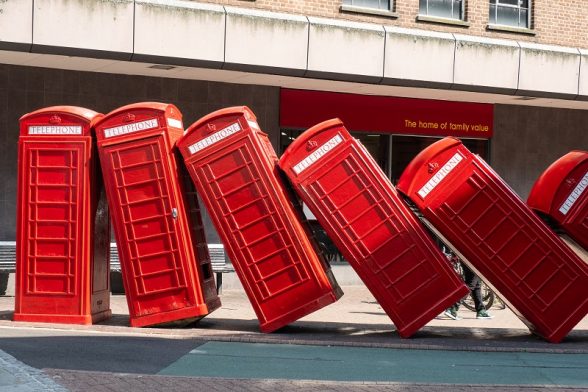This website uses cookies
This website uses cookies to enable it to function properly and to analyse how the website is used. Please click 'Close' to accept and continue using the website.



Photo: Wendy Akers
The Twentieth Century Society has welcomed the news that thousands of still functioning telephone boxes around the UK will be protected from closure, under plans announced this week by Ofcom.
The watchdog said it will ban BT from closing down 5,000 public phone boxes in areas of poor mobile signal, high accident rates and higher than average use.
Catherine Croft, Director of C20 Society, said: “Not only do phone boxes provide a vital public service, but they are a much loved example of British design at its most practical and innovative. Our campaign in the 1980s to stop the newly privatised BT from the wholesale replacement of Sir Giles Gilbert Scott’s iconic telephone boxes, was one of our greatest successes. We wrote to every local authority alerting them to the threat of losing them.
“We managed to persuade the Department of the Environment (then in charge of heritage protection) to recognise them as ‘miniature buildings’ so that key examples could be individually listed. The first listing achieved was in 1986: a rare example of a K3 box at London Zoo. Thanks to C20’s sustained efforts many more listings followed and it is thought that around 3,000 telephone boxes in the UK (not all of them still in their original use) now have this protection. It is wonderful news to hear that Ofcom’s ruling will protect yet more of these structures.”
According to the Ofcom announcement, almost 150,000 calls were made to emergency services from phone boxes in the year to May 2020, while 25,000 calls were made to Childline and 20,000 to Samaritans. Ofcom’s ruling means a phone box cannot be withdrawn if its location is not already covered by all four mobile networks or it is located at an accident or suicide hotspot.
If no payphone is needed, communities will be able to purchase the iconic red boxes for £1 and use it for a local service such as a community library, or to house public defibrillators. It is listing which has ensured that these innovative and socially valuable alternative uses have been devised, and that so many examples of a much-loved British classic have been retained in situ, rather than being sold to private owners for uses as diverse as shower cubicles and cocktail cabinets.
In 1912 the General Post Office took over control of almost all of the national telephone network and in 1921 developed a prototype telephone box, K1. The design was not a success with some councils refusing to have them in their boroughs (Eastbourne only relented when they were allowed to give theirs thatched roofs).
In 1924 the Royal Fine Art Commission launched a competition for a new design, which was won by Sir Giles Gilbert Scott, who was fresh from his success with the Anglican Cathedral in Liverpool. Scott’s original colour for the K2 was silver, but the Post Office changed this to red. The K2 was a huge critical success and led to Scott being commissioned to design further variations which could be installed nationwide. The most popular and most common was the smaller more cost effective K6 which Scott designed in 1935 to coincide with the Jubilee of King George V with many thousands being installed across the country. The K8, introduced in 1968 and designed by the architect Bruce Martin, was the last in the line of the iconic red telephone boxes. And first listed in 2007 after a second C20 Society campaign.
Ofcom’s ruling also stipulates that if more than 52 calls have been made from a phone box in the past year, it will be safeguarded from closure. So why not do your bit to help save these iconic structures and call a friend.

Become a C20 member today and help save our modern design heritage.